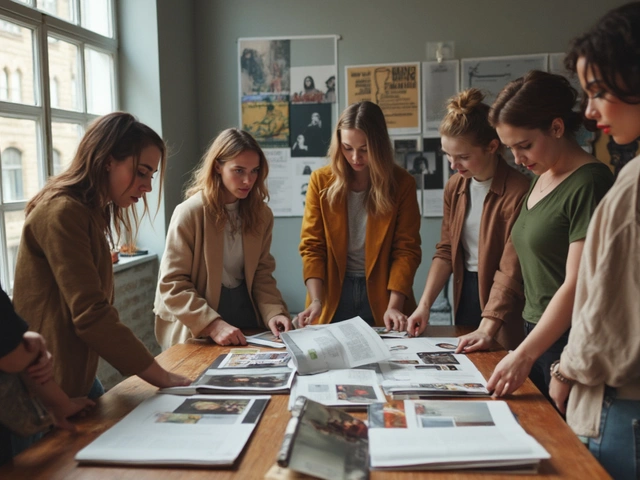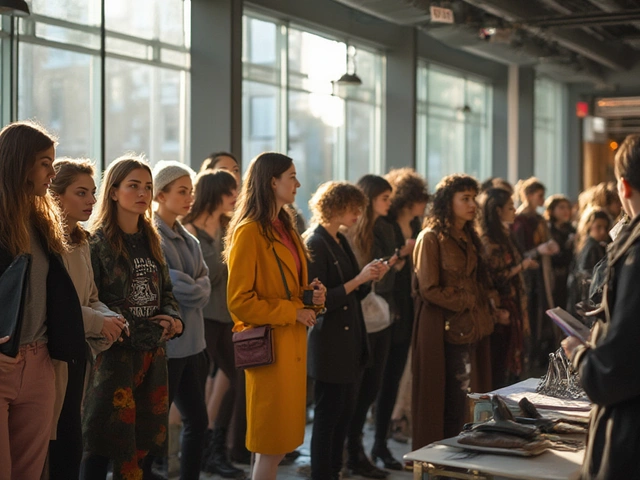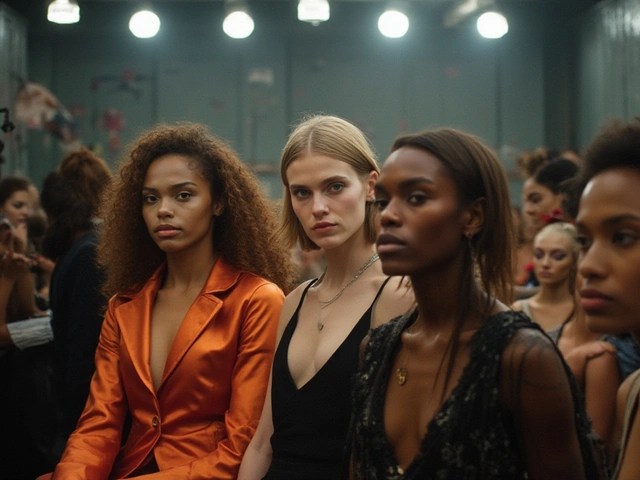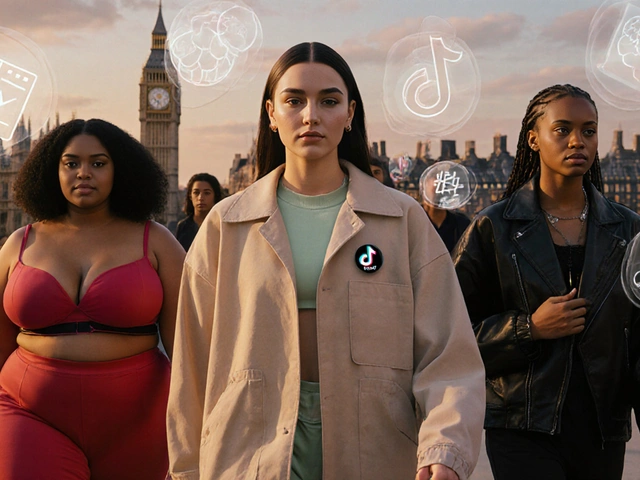When you think of global fashion, names like Kate Moss, Naomi Campbell, and Twiggy don’t just come to mind-they define eras. The UK hasn’t just produced models; it’s shaped the entire language of beauty, attitude, and rebellion on runways from Paris to New York. These aren’t just faces on billboards. They’re cultural shifts dressed in denim, leather, or haute couture.
Twiggy: The Girl Who Changed Everything
In 1966, a 16-year-old girl from London’s suburbs walked into fashion history. Lesley Lawson, better known as Twiggy, wasn’t just thin-she was a revolution. At 5’6” and 92 pounds, she broke the mold of the tall, curvy American models dominating the scene. Her androgynous look, big eyes, and short hair made her the face of Swinging London. Magazines sold out. Designers begged for her. By 1967, she was earning more than the Queen’s husband.
Twiggy didn’t just model clothes; she made youth culture wearable. She was the first true teen model, and her success proved that beauty didn’t need to be mature or polished. It could be fresh, raw, and real. Today’s models who embrace natural skin, minimal makeup, and unfiltered confidence? They’re standing on her shoulders.
Kate Moss: The Anti-Model Who Redefined Cool
Fast forward to 1990. A 14-year-old Kate Moss was spotted at JFK Airport by a modeling scout. She didn’t have the body of a traditional model-she was slight, almost fragile. But she had something no one else did: attitude. Her look, captured in Calvin Klein’s 1992 campaign, was the opposite of glamour. It was grunge. It was messy. It was real.
She didn’t just walk runways-she defined a generation’s aesthetic. Her partnership with Topshop turned her into a household name, not just a model. She made fashion accessible. She made it personal. And when the media tried to tear her down over personal struggles, she didn’t disappear. She came back stronger, turning controversy into longevity.
Today, she’s a fashion icon with her own brand, a judge on modeling shows, and still on magazine covers. Her legacy? That you don’t need to be perfect to be powerful.
Naomi Campbell: Power, Grace, and Breaking Barriers
Naomi Campbell wasn’t just the first Black British supermodel-she was the first Black model to grace the cover of French Vogue, walk for Chanel, and be paid six figures for a single campaign. In the 1980s and 90s, the fashion world was still overwhelmingly white. Naomi didn’t wait for permission. She walked in, claimed space, and refused to leave.
She worked with every major designer: Versace, Yves Saint Laurent, Alexander McQueen. She was part of the original “Big Five” supermodels. But her impact went beyond runway walks. She fought for diversity in casting, called out brands for exclusion, and used her platform to advocate for young Black models.
Even now, in her 50s, she’s still on runways and in campaigns. She’s not just a model-she’s a symbol of resilience. Her story isn’t just about beauty. It’s about who gets to be seen, and who gets to decide.
Adwoa Aboah: The New Voice of Authenticity
If Twiggy started the revolution, and Kate Moss changed the rules, then Adwoa Aboah is rewriting the playbook. Born in London to a Ghanaian mother and English father, Adwoa didn’t just model. She started Gurls Talk, a platform for young women to share mental health stories without shame.
She’s walked for Balenciaga, Fendi, and Gucci, but she’s equally known for speaking openly about depression, trauma, and body image. Unlike the polished, silent models of the past, Adwoa uses her voice. She’s not just representing fashion-she’s representing a generation that wants honesty over perfection.
Her rise isn’t accidental. Brands like L’Oréal and Nike don’t just want her face-they want her values. In 2025, she’s one of the most influential models in the world, not because she’s the thinnest or the tallest, but because she’s the most real.
What Makes a UK Model Icon?
There’s no single formula. But look closer, and you’ll see a pattern. UK models don’t just follow trends-they create them. They’re often outsiders: working class, unconventional, unapologetically themselves. They don’t wait to be chosen. They take over.
Compare them to American models from the same eras. American models were often polished, symmetrical, and marketed as aspirational. UK models? They were flawed, edgy, and relatable. They wore ripped jeans on runways. They spoke with accents. They didn’t smile on cue. And that’s what made them unforgettable.
The British fashion scene has always been more experimental. Designers like Vivienne Westwood, Alexander McQueen, and John Galliano didn’t want perfect bodies-they wanted stories. And UK models gave them that.
Today’s UK Models: The Next Wave
The legacy doesn’t stop with the icons. Today’s UK models are carrying the torch-but with new tools and new voices.
- Paloma Elsesser, of mixed heritage, is breaking size norms in high fashion, walking for Fendi and Prada.
- Amber Valletta, though American-born, was raised in the UK and became one of the first plus-size models to land a major L’Oréal campaign.
- Ellie Goldstein, who has Down syndrome, is the first model with an intellectual disability to walk for major brands like MAC Cosmetics and Topshop.
- Samara Weaving, though Australian, spent formative years in London and now represents the UK’s global influence in modeling.
These women aren’t just appearing in campaigns-they’re demanding change. They’re pushing for inclusive casting, fair pay, and mental health support. They’re not waiting for permission. They’re building the industry they want to see.
Why the UK Keeps Producing Icons
It’s not luck. It’s culture. The UK has a long history of challenging norms-from punk rock to streetwear. Fashion here isn’t just about looking good. It’s about saying something.
London Fashion Week doesn’t feel like Paris or Milan. It’s raw. It’s loud. It’s unpredictable. Designers here take risks. And the models? They match that energy. They’re not just wearing clothes-they’re performing identity.
Plus, the UK’s diverse population means models come from everywhere: Jamaica, Nigeria, India, Poland, Bangladesh. That mix creates a richer, more dynamic standard of beauty-one that’s constantly evolving.
What the Future Holds
The next generation of UK models won’t be defined by one look. They’ll be defined by their impact. Whether they’re advocating for climate-conscious fashion, using AI to protect their image rights, or launching their own brands, they’re not just posing. They’re leading.
Technology is changing how models are discovered. TikTok and Instagram have replaced scouting agencies for many. A 17-year-old in Manchester can go viral and land a campaign with a global brand-all without a traditional portfolio.
But the heart of it hasn’t changed. The UK still rewards authenticity over perfection. The best models today still have that same spark that Twiggy had: the courage to be different.
So when you see a young model on a London street, wearing bold colors and no makeup, walking like she owns the pavement-don’t think she’s just a model. Think: she’s the next chapter in a legacy that started with a skinny girl in 1966, and still hasn’t ended.
Who was the first British supermodel?
Twiggy, born Lesley Lawson in 1949, is widely considered the first British supermodel. She rose to fame in 1966 at age 16 and became a global icon, appearing on over 300 magazine covers and earning more than the Duke of Edinburgh at her peak. Her look defined the Swinging Sixties and changed what beauty meant in fashion.
Why are UK models so influential globally?
UK models are influential because they bring authenticity, edge, and individuality to fashion. Unlike the polished, idealized looks often promoted elsewhere, British models often reflect real people-working class backgrounds, diverse ethnicities, and unconventional features. London’s fashion scene encourages experimentation, and designers there have historically valued personality over perfection.
Are UK models still dominating fashion today?
Yes. While the industry is more global than ever, UK models remain at the forefront. Names like Adwoa Aboah, Ellie Goldstein, and Paloma Elsesser are shaping conversations around diversity, mental health, and inclusion. Major brands still rely on British talent for campaigns that feel fresh, bold, and culturally relevant.
How have UK models changed since the 1960s?
In the 1960s, UK models were celebrated for breaking traditional beauty standards-like Twiggy’s petite frame. Today, they’re breaking even more: gender norms, body types, racial barriers, and mental health stigma. Modern UK models are activists, entrepreneurs, and storytellers-not just faces for clothes. They use social media to control their narratives and demand ethical treatment in the industry.
What’s the difference between UK and American models?
American models often embody polished, aspirational beauty-think flawless skin, symmetrical features, and confident smiles. UK models tend to be more unconventional: they’re often thinner, more expressive, and less afraid to look imperfect. British fashion embraces grit and individuality, while American fashion often leans toward mass-market appeal. That’s why UK models are frequently chosen for avant-garde campaigns and editorial shoots.






